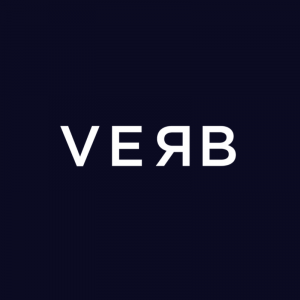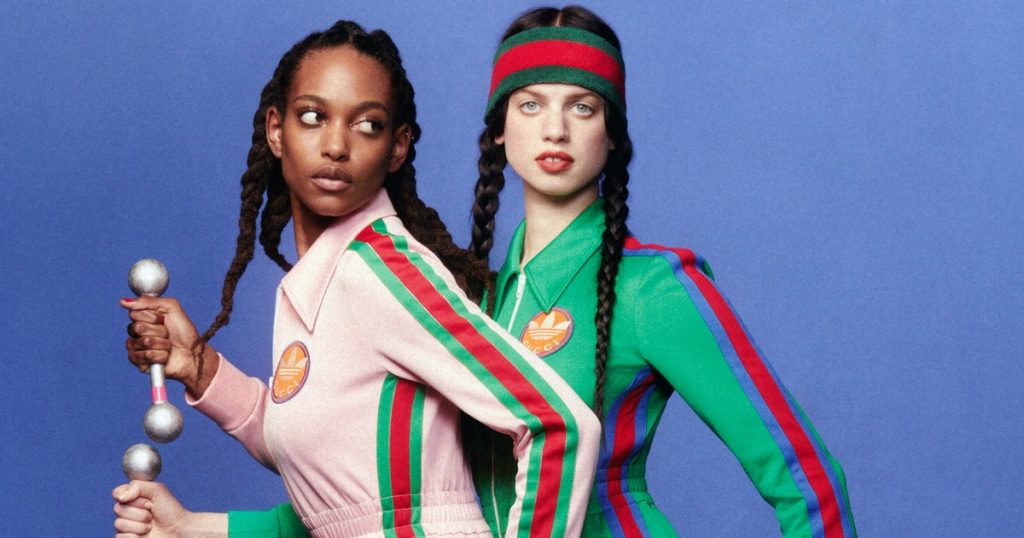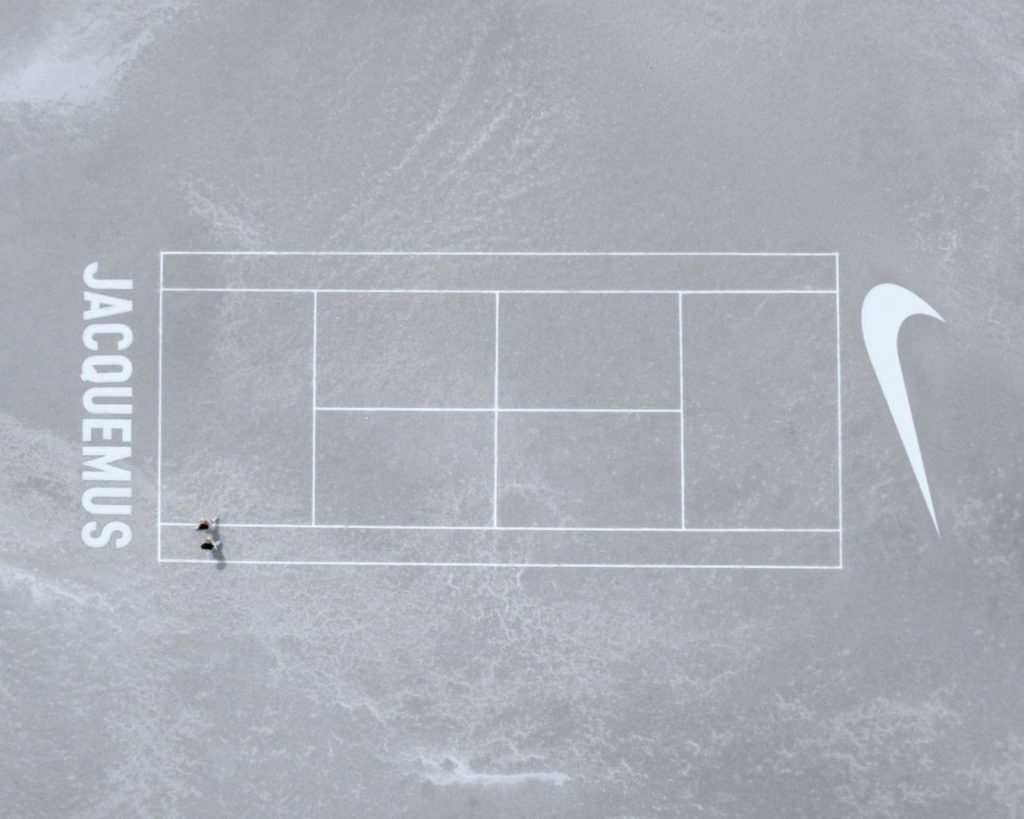The Secret to Creating a Great Campaign: Why Brands Need to Embrace Digital PR

Reading time: 6 min
What does Digital PR look like in the luxury space?
At VERB, we love luxury. We love creating new social trends for our clients, we love increasing paid and organic traffic referrals (yes, really), and we especially love filming stunning white horses in the gardens of stately homes (see the Creed Aventus creative for ref). Bottom line, we’re obsessed with luxury digital marketing – however, it’s not uncommon for lux brands to sometimes, well, drag their feet a little when it comes to adopting new digital tactics… we’re on a mission to change that.
The tide seems to be changing a little in the space of luxury fashion, with the likes of Gucci, Balenciaga and Mui Mui paving the way for adopting new and quirky methods of PR and marketing. We’re looking specifically at Gucci x Xbox, the destroyed Balenciaga sneaker and the return of the Miu Miu Macro Mini – all campaigns saw outstanding success.
So, no one is entirely sure why some luxury brands still show hesitance to embrace the new, perhaps their current methods of brand promotion work for them, and if so, great! However, one thing is sure, and that’s the speed at which digital marketing changes – it’s fast. No matter what industry, fail to innovate and move with the times, then be prepared to watch from the sidelines as the competition takes hold of that hard-earned market share.
All is not lost.
There are some exciting methods of marketing making waves in the luxury space right now. Take Digital PR for example, whilst the general concept has been knocking about for some time now, it’s vastly underutilised amongst luxury brands and the opportunity is abundant. There are a handful of lux brands seizing the opportunity, thereby positioning themselves as the innovators and market leaders. Though, the vast majority have not yet realised the potential.

What is Digital PR?
Digital PR often gets bracketed into one of two; just ‘online PR’ or just ‘SEO link building’, and often the response is, ‘we already have a team for that’. The truth, yes, Digital PR does incorporate both of those things, however, it sits somewhere in the middle and on a slight tangent – Digital PR is entirely its own entity.
Similarly to traditional PR, Digital PR sits under the earned media umbrella, meaning any placements are both great exposure and a vote of confidence from the publication covering the story. This translates to SEO value as the backlink (directing traffic to the brand’s home or campaign page), tells Google that this brand’s website is trustworthy and hosts quality original content, leading to a boost in SERP (search engine results page) ranking and DA (domain authority) score. Of course, there’s driving traffic, expanding audience reach and a whole host of other benefits, but this is essentially the idea.
The difference between Digital and traditional PR
A key difference between Digital and traditional PR is reporting. DPR is granular and extremely quantifiable, measuring much more than just estimated reach. Through GA, we track the CTR from the best performing placements (and the worst), with the % of new users, where they clicked, how long they stayed onsite and if they converted. Learnings are taken from each campaign to inform the next and allow for continuous performance growth.
A good way to spot a Digital PR campaign against a traditional is if the story holds general market interest – the content has to be a story in its own right. For example, a traditional PR headline might look like;
‘London hotel opens new cocktail bar’
and Digital PR story would look something like this;
‘The Pornstar Martini crowned London’s favourite cocktail, new study reveals each UK city’s most favoured tipple‘
The latter uses search data to reveal the most loved cocktail in every city across the UK. Not only does this have national appeal, it can be outreached to regionals as well as food and beverage publications. The brand is promoted through commissioning the content (example reading; ‘a study by linked brand’ revealed that…’) with the bar opening promoted in the campaign copy.
Placements for the first headline would likely be limited to industry hotelier publications and London-centric outlets, rather than the second headline that would work across multiple sectors due to having that broader and more general appeal.
DPR campaigns are not often solely brand led, they take the more lateral approach in order to earn the most possible backlinks. Therefore, Digital PR rarely interferes with traditional PR outreach. The two can complement each other through expanding reach with different methods.

Digital PR is a content lead method of SEO
Links earned through methods of Digital PR improve the health of a brands backlink profile, drive traffic, improve SERP rankings and increase branded and non-branded search – all of which is done organically. It’s key to note that organic is generally more valuable for overall brand ROI than methods of paid marketing. Paid is limited on spend over a specific time period, organic is not, meaning it drives both short and long term benefits to the brand.
The secret sauce to a great campaign
Digital PR falls under ‘earned’ media, meaning coverage is valuable but not guaranteed and can be pretty unpredictable. Therefore, when ideating campaigns there are lots of things we do in DPR to give them the best hope of landing those top tier links.
Before ideating, we amalgamate brand purpose with media landscape analysis and audience interests in order to gain an in-depth understanding of what we’re working towards.
For example, if as a brand your objective is to break into a new market/demographic, Digital PR is the perfect way to achieve this. We dissect the intended audience into smaller cohorts and analyse their drivers and hobbies, particularly looking into their media consumption and what these individual publications are writing about. We complete a deep dive competitor analysis, using tools to understand content themes that have worked for the competition, and what hasn’t. We take these findings and align them with the brand USPs, the PR calendar and relevant trending media themes.
The team then put their heads together to pull on the threads of creativity to ideate award-winning campaigns. Tools like Buzzsumo and Keyword Planner are invaluable for ensuring all our ideas are hyper-relevant and inline with search and media trends. A good campaign has around 3-5 different niches (consumer/publication groups) for outreach as well as the legs to be re-angled if needed. This method is tried and tested to deliver the best possible ROI in the luxury market.
If all these things are done – and done well – you’ve got yourself a winner.
Final thoughts
Luxury brands are unique by nature, they all have different USPs, quirks and heritage links – that’s why we love them. It’s therefore also never going to be one shoe fits all, every strategy has to be personalised, tailored and approached in a slightly different way to deliver what is right for the brand.
Journalists report to receive between 100 to 500 stories per day in their inbox – that’s a lot of competition and a whole lot of ‘move to bin’. Cutting through that noise is getting harder and harder, for brands wanting to reap the rewards of high quality backlinks they’re either going to have to empty the piggy bank for an advertorial or get clever with the approach.
Digital PR is making huge waves in the industry right now and the demand for it is soaring – there’s a reason there are currently 3,500+ ‘Digital PR’ jobs open on Indeed right now. Despite the growing noise and competition in other sectors for DPR, the opportunity within luxury and premium remains to be vast. It’s not every day a new method of brand promotion hits the market with such force, and we can’t wait to see how this evolves within the luxury space.
To find out more about VERB Brand’s digital PR services, please drop us a line through our contact form. We’d love to start supporting you on this journey!









